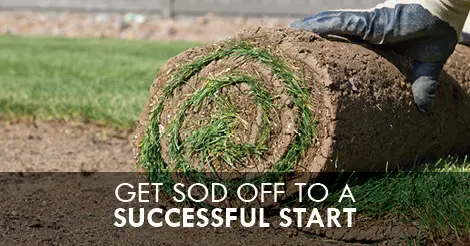
The Grounds Guys share expert tips for successful sod installation:
|
This spring, many homeowners and business owners are preparing their landscape for the new season. As you look at your lawn, do you think it needs a little improvement? If the grass looks dull or isn’t in the same condition as last year, you might want to consider putting down some sod, or calling the professionals for help.
Types of Sod
- Centipede: Low maintenance, typically found in warmer areas.
- St. Augustine: Popular, thicker grass that requires some maintenance.
- Bermuda: Thick grass that requires a lot of sun. Used as turf.
- Zoysia: High-quality grass that requires some maintenance. Best grown in areas with lower temperatures.
Determine what type of sod is best
There are many factors to determine what type of sod is right for your yard:
- Temperature: Do you live in an area that gets little rain or high temperatures? Some grass will thrive, other will not.
- Uses: Will this be a place that gets a lot of foot traffic, or will it be spread out over a large area?
- Sun exposure: Some types of sod require lots of light, do you live in a sunny area?
- Management: Are you willing to spend some time or hire a professional to keep your yard looking good?
Preparation
To prepare your soil for sod, make sure that you rake the yard and remove any rocks or pebbles that might be in the soil. Ensure that your yard is even and flat. You can add a starter blend of fertilizer, as well, in either liquid or granular form.
DIY?
If you are installing sod in a small area, you might be able to handle the project yourself. Unless you have successfully installed sod in the past, protect your investment and leave a large landscape project to the professionals.
Upkeep
There are a few ways to encourage newly-placed sod takes root into the ground:
- First, keep the new sod evenly moist until root establishes and grows an inch per week during growing season.
- Next, make sure to keep foot traffic off of the area for the first few days. This is crucial for ensuring proper root formation.
- Finally, let it grow. Don’t cut the grass during this time and don’t use weed killers. Let the sod grow naturally during the first few weeks.
The Grounds Guys are experts at landscape and lawn care management. Check out another article about sod or contact your local The Grounds Guys today to get professional help with your projects!
For Further Reading
Which Kinds of Grasses Survive the Heat Best?